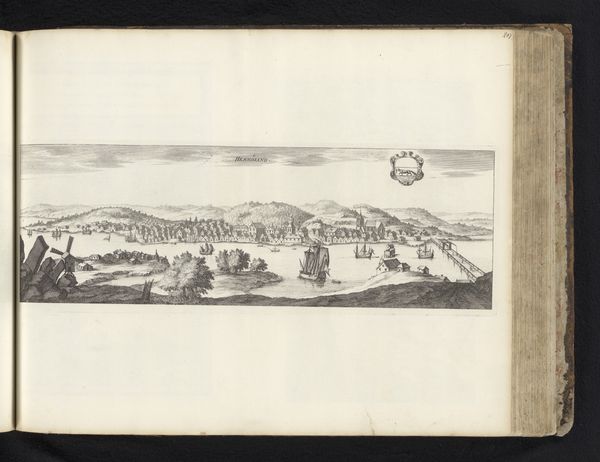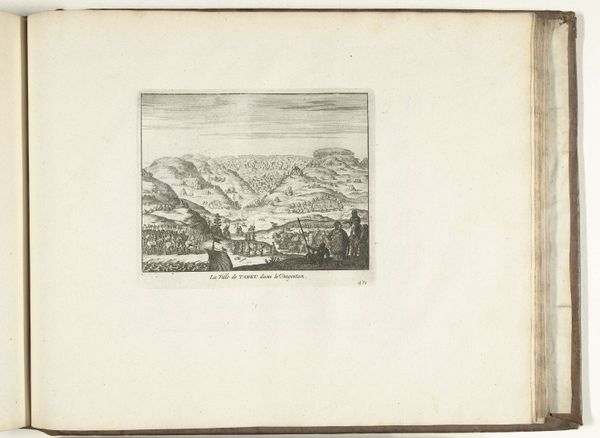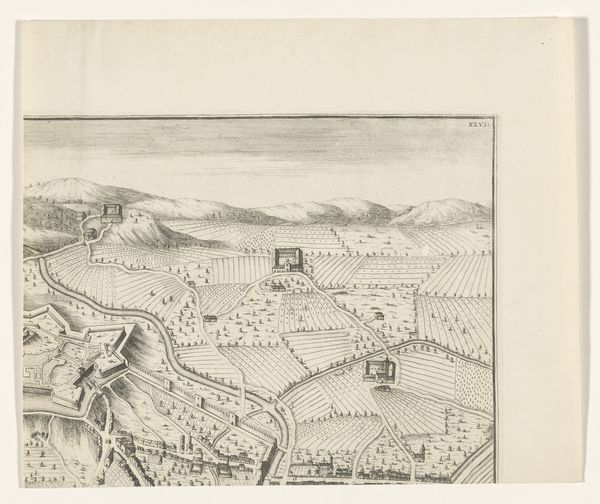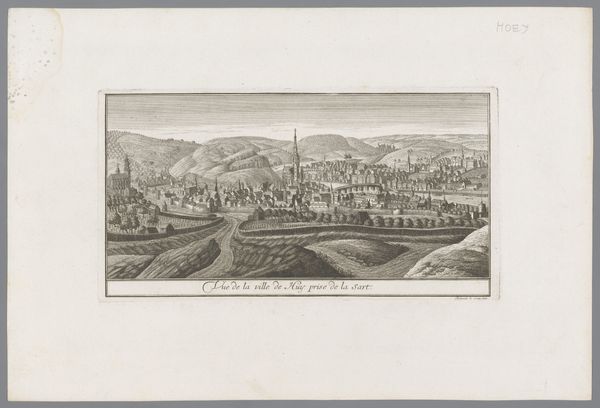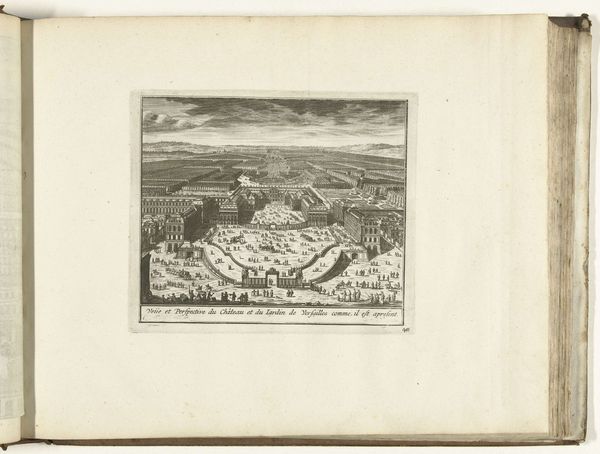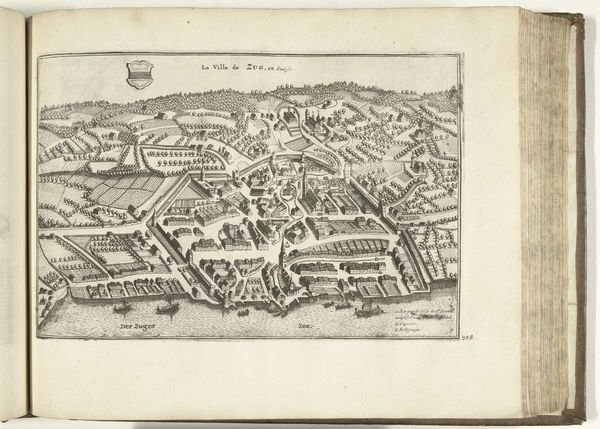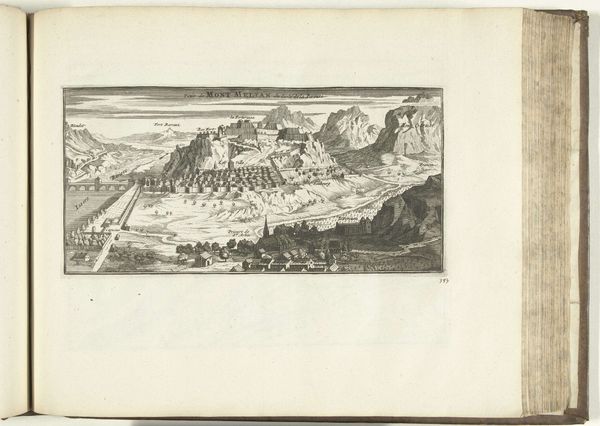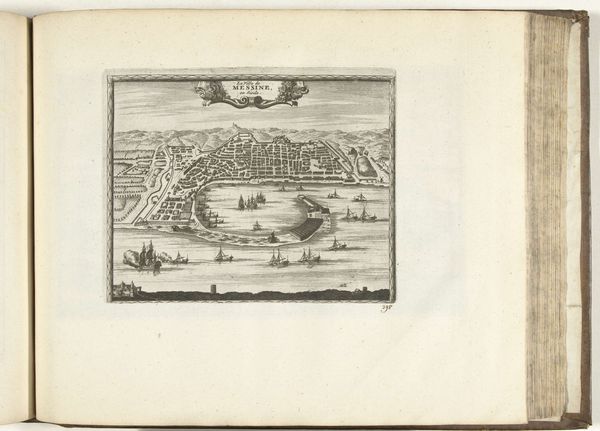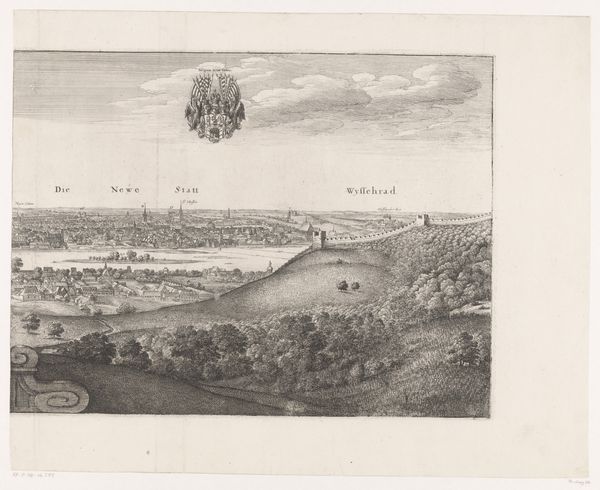
drawing, print, paper, ink, engraving
#
drawing
#
aged paper
#
toned paper
#
baroque
# print
#
sketch book
#
landscape
#
paper
#
personal sketchbook
#
ink
#
pen-ink sketch
#
pen work
#
sketchbook drawing
#
cityscape
#
watercolour illustration
#
sketchbook art
#
engraving
#
watercolor
Dimensions: height 182 mm, width 273 mm
Copyright: Rijks Museum: Open Domain
This print, "Gezicht op Turijn," or "View of Turin," was made between 1701 and 1713 by Abraham Allard using an engraving technique. Engraving, in Allard’s time, was a skilled, laborious practice, demanding intensive training and craft knowledge to render detail with precision. The process involved meticulously incising lines onto a metal plate, which would then be inked and pressed onto paper to create the final print. Consider how the crisp lines and intricate details in the print are a direct outcome of this highly controlled and deliberate process. Such prints were crucial for circulating knowledge about cities and territories, serving both practical and symbolic functions. They provided viewers with a sense of mastery over distant places, feeding into the burgeoning culture of exploration and commerce that defined the period. The creation and distribution of these prints also supported a network of artisans, traders, and consumers, highlighting the intertwining of artistic production and economic activity. By recognizing the labor and context embedded in this print, we move beyond simply seeing a depiction of a city, and appreciate the work as a testament to the era's technologies, social structures, and ways of seeing.
Comments
No comments
Be the first to comment and join the conversation on the ultimate creative platform.
